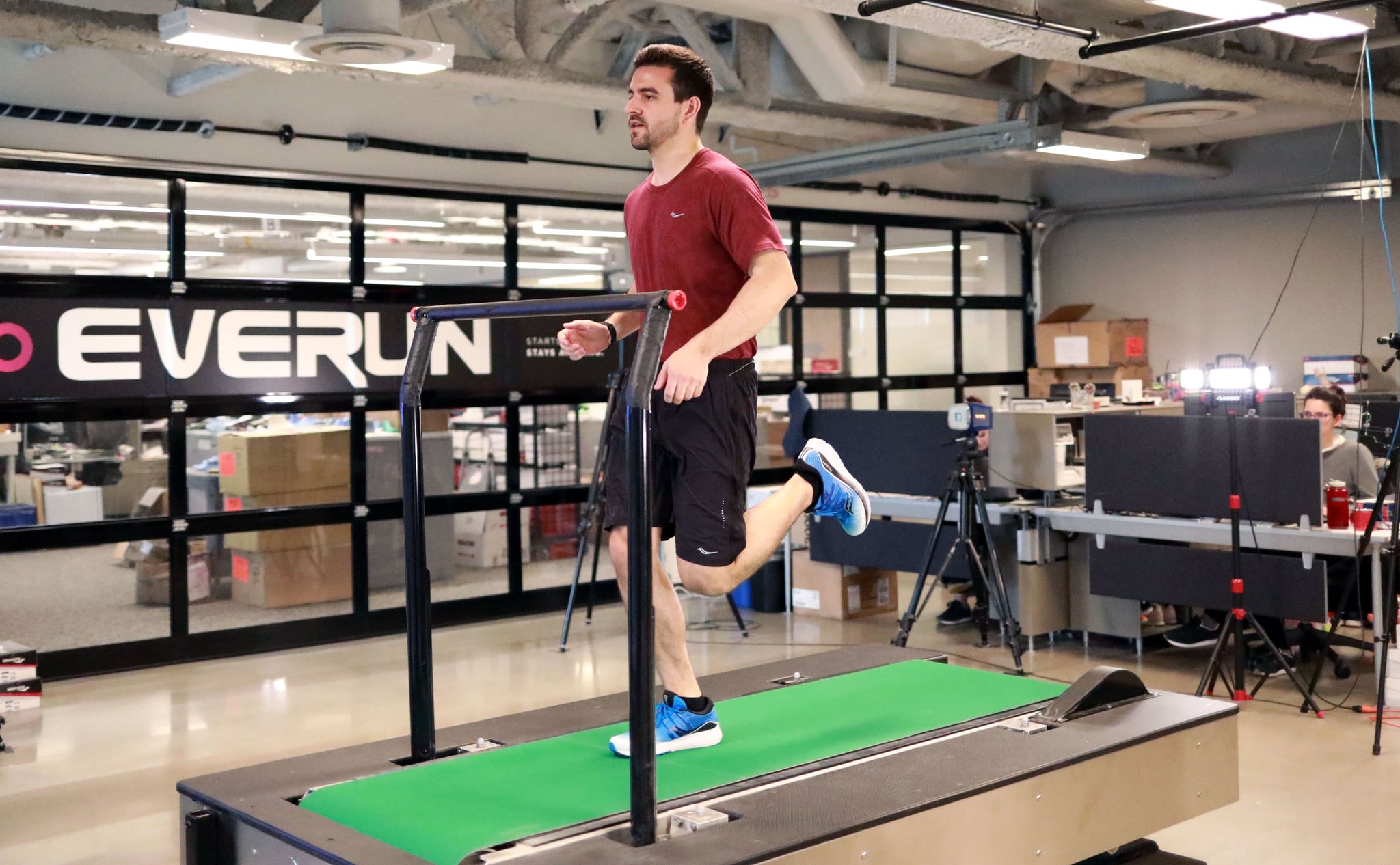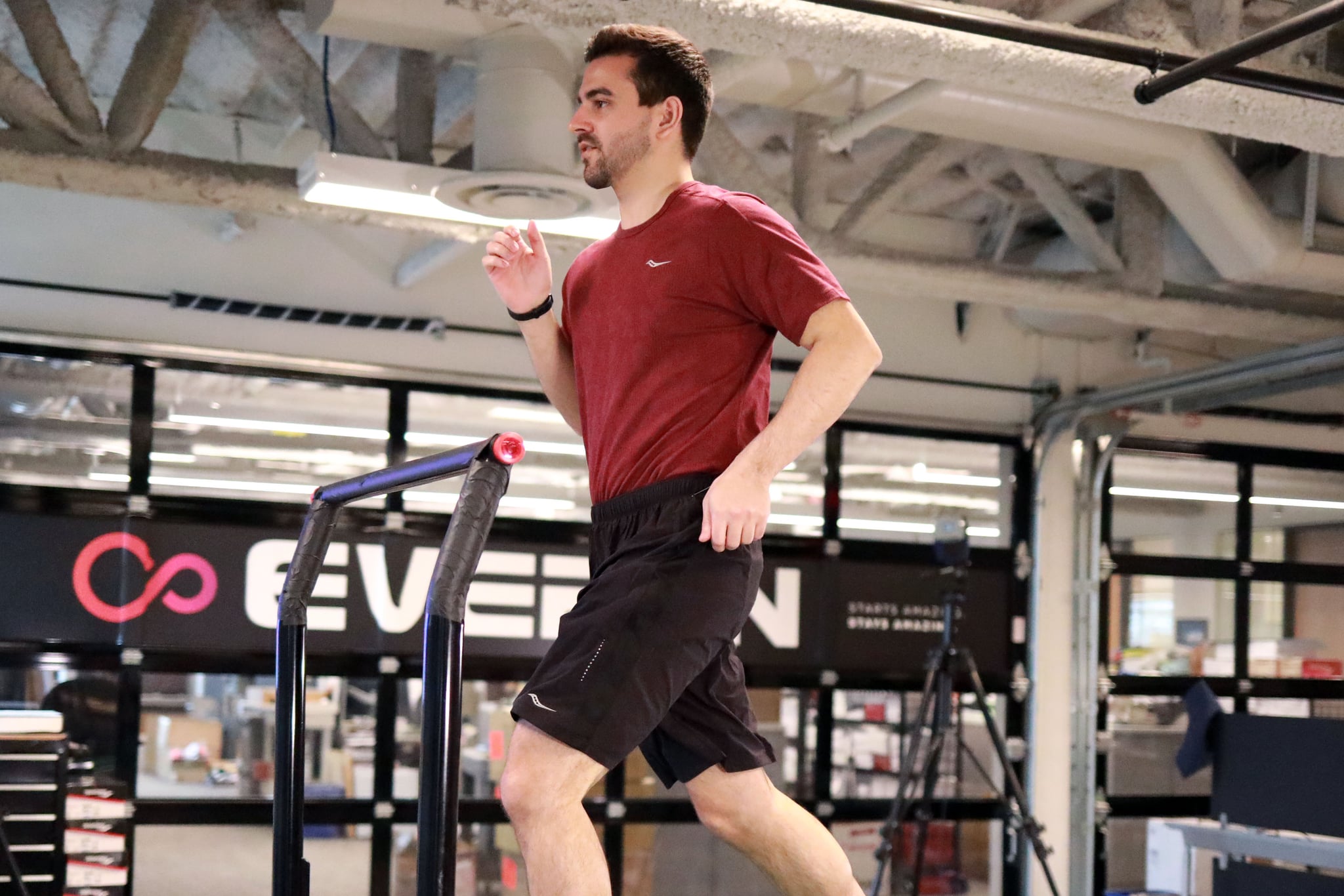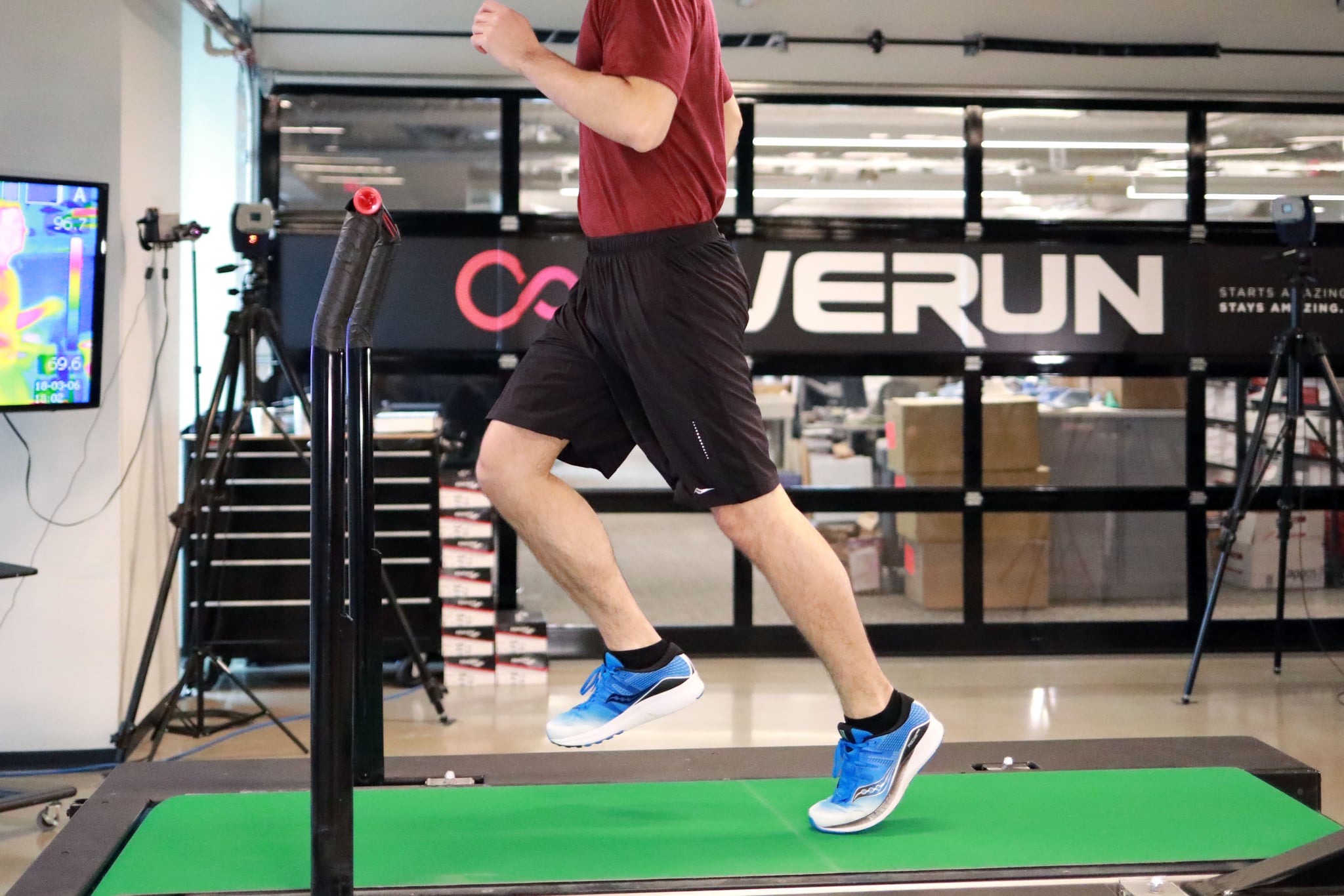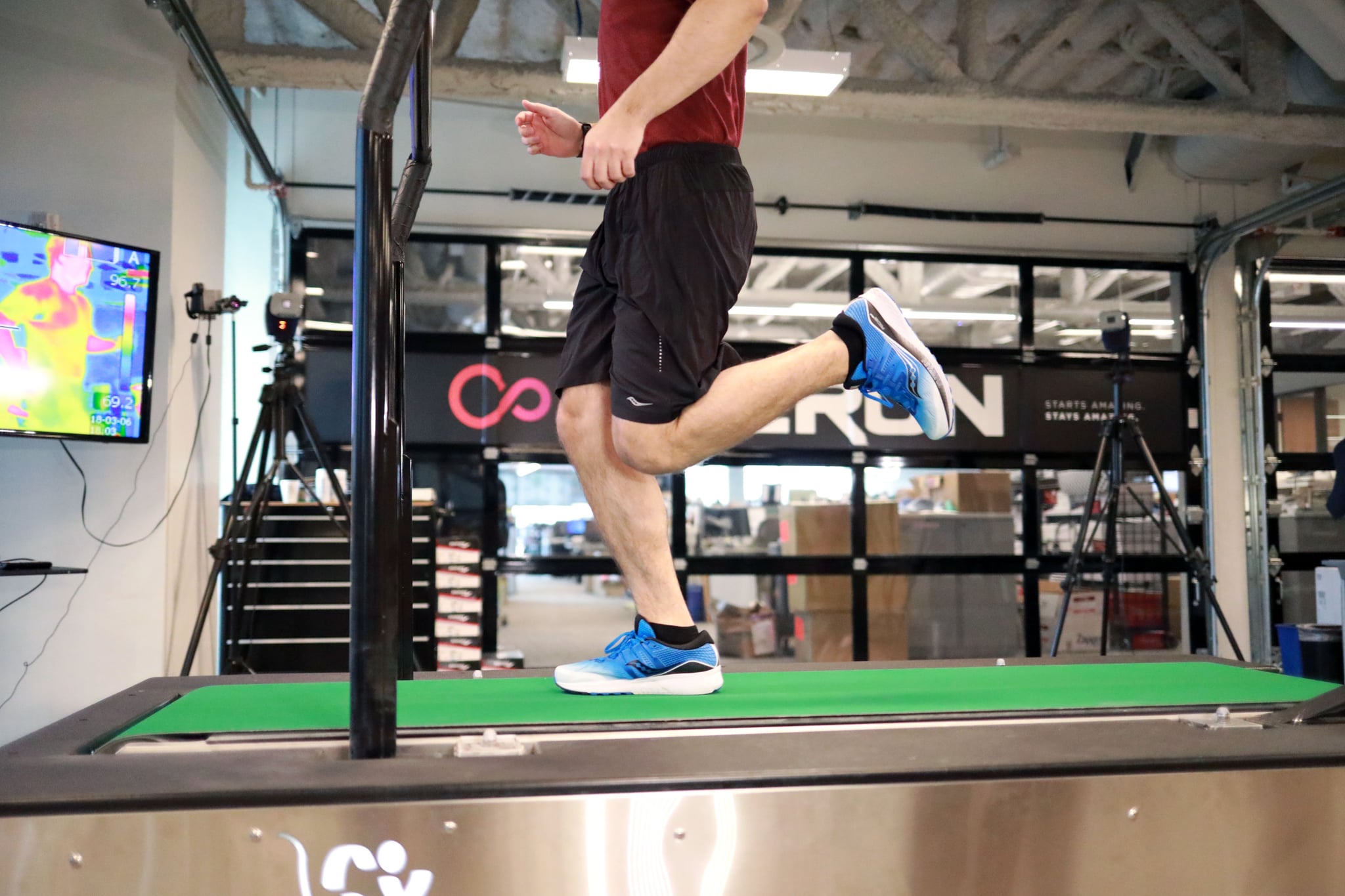

If you don't know about the running shoe and apparel brand Saucony, you probably should. The brand's been around for literally 120 years. Its business started in Kutztown, PA, in 1898 along the banks of the Saucony Creek, giving a nod to its roots in its company name and logo, which symbolizes a creek.
Saucony doesn't go after fashion. Yes, its shoes are fashionable, but unlike other wildly popular brands, it works closely with athletes (including Olympians) at its headquarters and implements its findings to better its products for the rest of us.
I spent the day at Saucony's Human Performance & Innovation Lab located outside of Boston in Waltham, MA, where my running was put to the test by vice president and head of Saucony's Innovation Lab Spencer White.
As high-tech as the lab is, White isn't speaking a foreign language. His tips and recommendations can be applied both an Olympian or someone like me, a casual weekend runner.
We focus on three main components when analyzing a stride: contact, midstance, and toe-off.
Contact Is All About Absorbing the Energy
"What I'm looking for here is how your body is positioned to absorb the energy as you come to the ground. I'm interested in what the lower leg is doing rather than the foot," White explained.
Your ankle should be under your knee. Your leg should be out far enough where you can land and move over it, while not losing any of the force for toe-off. Toe-off is the point where the foot leaves the ground and begins to swing forward. It is one of the positions White uses to analyze a stride, because the position of the body at this point gives him a sense of how well a runner is using the big muscles in the back of the leg to propel themselves forward.
If your leg is straight when you land, your muscles don't absorb any impact, which can be dangerous to your joints. To avoid this, your leg should be slightly bent. Additionally, your upper body position should be nice and vertical, not leaning forward or backward.
When talking about what part of the foot makes contact, White said, "A common mistake is that runners think they need to land on their forefoot or midfoot and not the heel. This is not true. About 89 percent of runners land on their heel, which is perfectly fine."
The Force Is Greatest at Midstance

At midstance in running, the body is supported on one leg while the other leg is swinging forward. "Midstance is where your body generates the most force. Your body needs to be straight to handle the force effectively," White said.
The way to see this is to it analyze from behind to see how the body is aligned. Most importantly, your hips should be horizontal and straight across. Oftentimes the unsupported hip (the hip where the leg is in the air and not planted on the ground) will drop.
White explained, "You have a little more ankle rolling-in on your right side than your left. Ankle rolls are not right or wrong, that's just how your body moves. If you're getting hurt from ankle rolling, then we have a problem."
Although pronation (inward roll of the ankle) is a normal part of the running motion, some runners still experience discomfort or injuries from it and need assistance in reducing the stress of this motion.
White suggested, "Try shoes with a 'medial post.' That is a stiffer material in the sole under the inside edge of the heel and arch. Runners can also get relief from more supportive underfoot inserts."
Get Ready For Take-Off With Your Toe-Off.

It's time to release all of the energy that you've been manifesting. What's important here is to get a good extension of the thigh, because that's where all of the power comes from in the stride.
It's very common for runners to have tight hip flexors, which means they will get to a point before full extension where they will pick up their leg or arch their back. If this happens, it means you're too tight at your hips, calves, or hamstrings.
White noticed a lack of form in my arms equaling a loss of energy I could be maximizing. "Don't extend your elbow or drop your hands down. Arms swinging with elbows at a fixed angle keep constant inertia, which keeps everything else moving at the same rate," he told me.
Foam Rollers Are Your Best Friend

If you don't own a foam roller or have access to one at the gym, it's a smart investment for runners of any experience level. Stretching and cooling down is extremely vital in daily routines, and can only help your performance and strengthen your stride.
White recommended doing yoga, but if you're not a yogi, then stretching exercises are great, too. He said, "Runners that alternate between multiple pairs of running sneakers and vary their runs have 39 percent less of a chance of getting injured from running."
Last year, the brand launched Saucony Stride Lab, an app with helpful tips and exercises to keep you moving while also tracking your body and stride evaluation.







0 comments :
Post a Comment